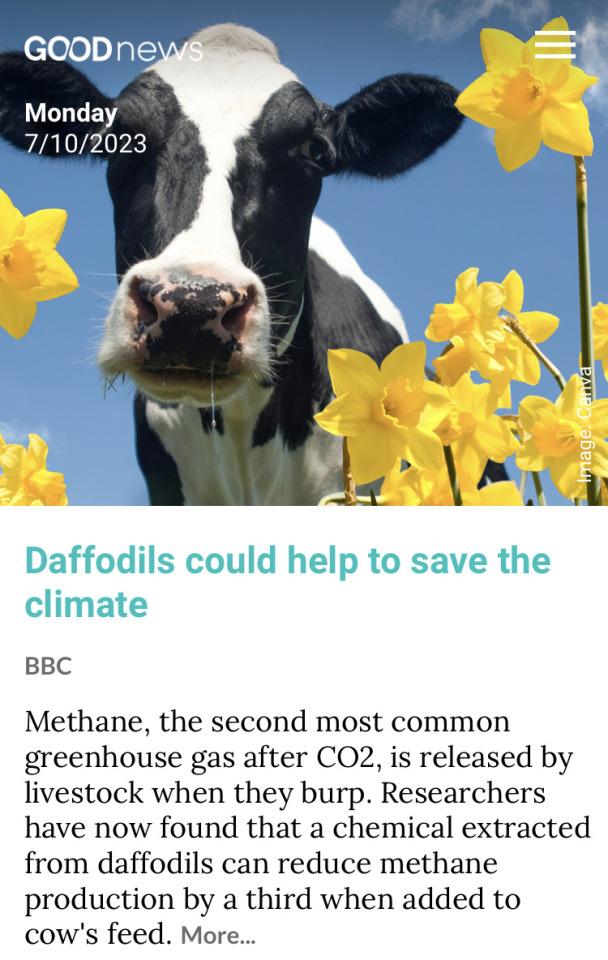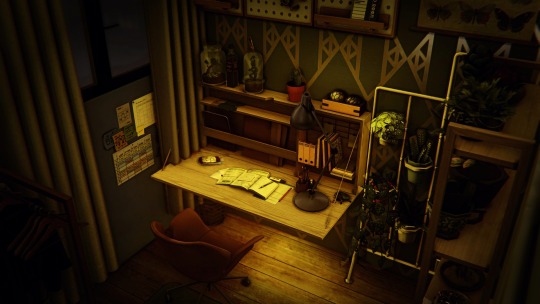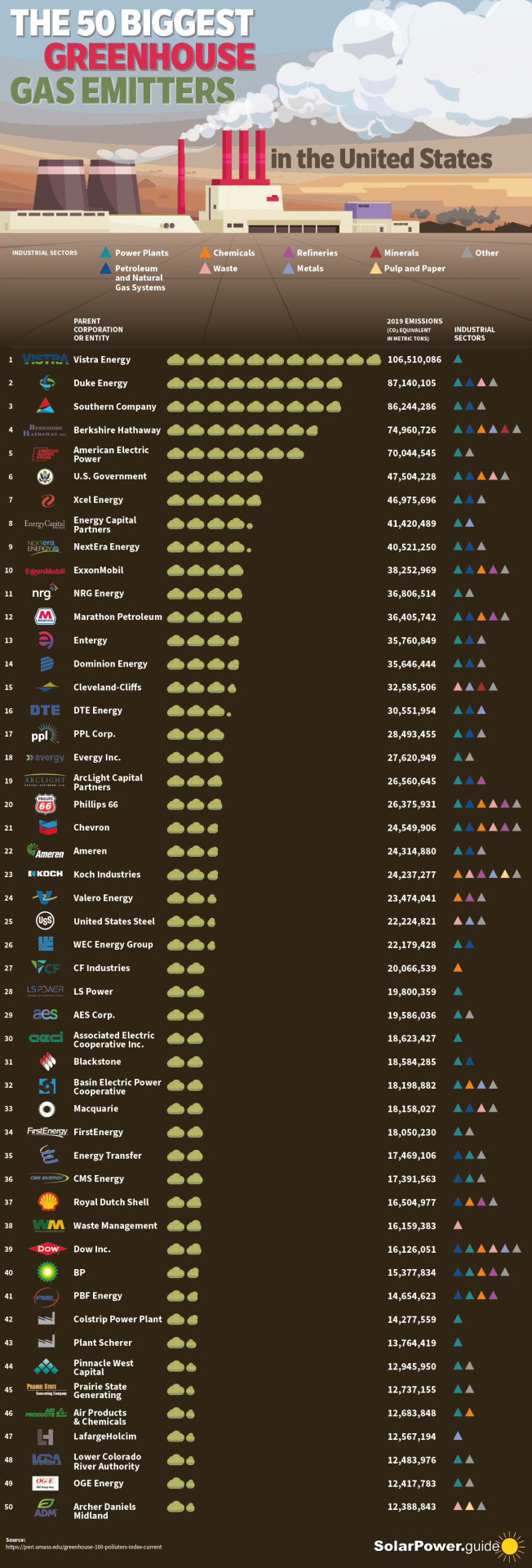#greenhouse industry
Explore tagged Tumblr posts
Text

The design options displayed in this kitchen include a magnificent industrial stove which surprisingly doesn't seem out of place in a room whose robin's-egg blue and eggshell white coloring give the whole space a delicate, feathery weightlessness. Observe how naturally the size and bulk of a stainless-steel commercial stove fits right in, suggesting that the sheer bulk of large appliances need not limit the design concepts used.
Beyond The Kitchen: A Dreamer’s Guide, 1985
#vintage#vintage interior#1980s#80s#kitchen#dining room#pendant lamp#greenhouse#checkered#light blue#industrial#stove#modern#style#furniture#home#architecture#parsons table
527 notes
·
View notes
Text
Excerpt from this story from Grist:
Recent data analysis conducted by a human rights advocacy organization found that nearly a dozen international finance institutions directed over $3 billion to animal agriculture in 2023. The majority of those funds — upwards of $2.27 billion — came from development banks and went towards projects that support factory farming, a practice that contributes to greenhouse gas emissions as well as biodiversity loss.
The researchers behind the analysis are calling on the development banks — which include the International Finance Corporation, or IFC, part of the World Bank — to scrutinize the climate and environmental impacts of the projects they fund, especially in light of the World Bank’s climate pledges.
The analysis comes from the International Accountability Project, which reviewed disclosure documents from 15 development banks and the Green Climate Fund, established in 2010 at COP16 to support climate action in developing countries. Researchers found that 10 of those development banks, as well as the Green Climate Fund, financed projects directly supporting animal agriculture. The data serves as the basis for a new white paper from Stop Financing Factory Farming, or S3F, a coalition of advocacy groups that seeks to block development banks from funding agribusiness, released last month.
The International Accountability Project, which advocates for human and environmental rights, hopes that its findings will pressure international financial institutions like the World Bank to see the contradiction in financing industrial animal agriculture projects while also promising to help reduce harmful greenhouse gas emissions.
Agriculture accounts for a significant portion of global greenhouse gas emissions, so much so that research has suggested limiting global warming to 1.5 degrees Celsius (2.7 degrees Fahrenheit) is not possible without changing how we grow food and what we eat. Within the agricultural sector, livestock production is the main source of greenhouse emissions — as ruminants like cows and sheep release methane into the atmosphere whenever they burp.
9 notes
·
View notes
Text
Former officials in the UN’s farming wing have said they were censored, sabotaged, undermined and victimised for more than a decade after they wrote about the hugely damaging contribution of methane emissions from livestock to global heating.
Team members at the UN Food and Agriculture Organization (FAO) tasked with estimating cattle’s contribution to soaring temperatures said that pressure from farm-friendly funding states was felt throughout the FAO’s Rome headquarters and coincided with attempts by FAO leadership to muzzle their work.
The allegations date back to the years after 2006, when some of the officials who spoke exclusively to the Guardian on condition of anonymity wrote Livestock’s Long Shadow (LLS), a landmark report that pushed farm emissions on to the climate agenda for the first time. LLS included the first tally of the meat and dairy sector’s ecological cost, attributing 18% of global greenhouse gas emissions to livestock, mostly cattle. It shocked an industry that had long seen the FAO as a reliable ally – and spurred an internal clampdown by FAO hierarchy, according to the officials.
“The lobbyists obviously managed to influence things,” one ex-official said. “They had a strong impact on the way things were done at the FAO and there was a lot of censorship. It was always an uphill struggle getting the documents you produced past the office for corporate communications and one had to fend off a good deal of editorial vandalism.”
Serving and former FAO experts said that between 2006 and 2019, management made numerous attempts to suppress investigations into the cow/climate change connection. Top officials rewrote and diluted key passages in another report on the same topic, “buried” another paper critical of big agriculture, excluded critical officials from meetings and summits, and briefed against their work.
"There was substantial pressure internally and there were consequences for permanent staff who worked on this, in terms of their careers. It wasn’t really a healthy environment to work in,” said another ex-official.
Scientists also expressed concern about the way the FAO’s estimate of livestock’s overall contribution to emissions is continuing to fall. The 18% number that was published in 2006 was revised downwards to 14.5% in a follow-up paper, Tackling Climate Change Emissions in 2013. It is currently being assessed at about 11.2% based on a new “Gleam 3.0” model.
But many scientists plot farm emissions on a very different trajectory. One recent study concluded that greenhouse gas emissions from animal products made up 20% of the global total and a 2021 study found that the figure should be between 16.5% and 28.1%.
#agriculture#united nations#climate change#greenhouse gasses#methane emissions#animal agriculture#farming#industry#capitalism#greed
57 notes
·
View notes
Text
Green Ammonia Market Statistics, Segment, Trends and Forecast to 2033
The Green Ammonia Market: A Sustainable Future for Agriculture and Energy
As the world pivots toward sustainable practices, the green ammonia market is gaining momentum as a crucial player in the transition to a low-carbon economy. But what exactly is green ammonia, and why is it so important? In this blog, we'll explore the green ammonia market, its applications, benefits, and the factors driving its growth.
Request Sample PDF Copy:https://wemarketresearch.com/reports/request-free-sample-pdf/green-ammonia-market/1359
What is Green Ammonia?
Green ammonia is ammonia produced using renewable energy sources, primarily through the electrolysis of water to generate hydrogen, which is then combined with nitrogen from the air. This process eliminates carbon emissions, setting green ammonia apart from traditional ammonia production, which relies heavily on fossil fuels.
Applications of Green Ammonia
Agriculture
One of the most significant applications of green ammonia is in agriculture. Ammonia is a key ingredient in fertilizers, and its sustainable production can help reduce the carbon footprint of farming. By using green ammonia, farmers can produce food more sustainably, supporting global food security while minimizing environmental impact.
Energy Storage
Green ammonia can also serve as an effective energy carrier. It can be synthesized when there is surplus renewable energy and later converted back into hydrogen or directly used in fuel cells. This capability makes it an attractive option for balancing supply and demand in renewable energy systems.
Shipping Fuel
The maritime industry is under increasing pressure to reduce emissions. Green ammonia has emerged as a potential zero-emission fuel for ships, helping to decarbonize one of the most challenging sectors in terms of greenhouse gas emissions.
Benefits of Green Ammonia
Environmental Impact
By eliminating carbon emissions during production, green ammonia significantly reduces the environmental impact associated with traditional ammonia. This aligns with global efforts to combat climate change and achieve sustainability goals.
Energy Security
Investing in green ammonia can enhance energy security. As countries strive to reduce their dependence on fossil fuels, green ammonia offers a renewable alternative that can be produced locally, minimizing reliance on imported fuels.
Economic Opportunities
The growth of the green ammonia market presents numerous economic opportunities, including job creation in renewable energy sectors, research and development, and new supply chain dynamics. As demand increases, investments in infrastructure and technology will drive innovation.
Factors Driving the Growth of the Green Ammonia Market
Regulatory Support
Governments worldwide are implementing policies and incentives to promote the adoption of green technologies. These regulations often include subsidies for renewable energy production and carbon pricing mechanisms, making green ammonia more competitive.
Rising Demand for Sustainable Solutions
With consumers and businesses becoming increasingly aware of their environmental impact, the demand for sustainable solutions is on the rise. Green ammonia aligns with this trend, providing an eco-friendly alternative to traditional ammonia.
Advancements in Technology
Ongoing advancements in electrolysis and ammonia synthesis technologies are making the production of green ammonia more efficient and cost-effective. As these technologies mature, they will further enhance the viability of green ammonia in various applications.
Conclusion
The green ammonia market represents a promising avenue for sustainable development across agriculture, energy, and transportation sectors. As technology advances and regulatory support strengthens, green ammonia is poised to become a cornerstone of the global transition to a greener economy. Investing in this market not only contributes to environmental preservation but also opens up new economic opportunities for innovation and growth.
#The Green Ammonia Market: A Sustainable Future for Agriculture and Energy#As the world pivots toward sustainable practices#the green ammonia market is gaining momentum as a crucial player in the transition to a low-carbon economy. But what exactly is green ammon#and why is it so important? In this blog#we'll explore the green ammonia market#its applications#benefits#and the factors driving its growth.#Request Sample PDF Copy:https://wemarketresearch.com/reports/request-free-sample-pdf/green-ammonia-market/1359#What is Green Ammonia?#Green ammonia is ammonia produced using renewable energy sources#primarily through the electrolysis of water to generate hydrogen#which is then combined with nitrogen from the air. This process eliminates carbon emissions#setting green ammonia apart from traditional ammonia production#which relies heavily on fossil fuels.#Applications of Green Ammonia#Agriculture#One of the most significant applications of green ammonia is in agriculture. Ammonia is a key ingredient in fertilizers#and its sustainable production can help reduce the carbon footprint of farming. By using green ammonia#farmers can produce food more sustainably#supporting global food security while minimizing environmental impact.#Energy Storage#Green ammonia can also serve as an effective energy carrier. It can be synthesized when there is surplus renewable energy and later convert#Shipping Fuel#The maritime industry is under increasing pressure to reduce emissions. Green ammonia has emerged as a potential zero-emission fuel for shi#helping to decarbonize one of the most challenging sectors in terms of greenhouse gas emissions.#Benefits of Green Ammonia#Environmental Impact#By eliminating carbon emissions during production#green ammonia significantly reduces the environmental impact associated with traditional ammonia. This aligns with global efforts to combat
6 notes
·
View notes
Text

#i’ve heard this and seaweed/kelp? i think#but also we need to have beef alternatives and just eat less meat in general#but every bit helps#good news#animals#science#meat eating#climate change#meat industry#environmentalism#environment#methane#greenhouse gases#greenhouse gas reduction
58 notes
·
View notes
Text



Geothermal heated greenhouse and world famous tomato based restaurant Friðheimar - Reykholt, Iceland
30 notes
·
View notes
Text
The Best of Both Worlds
A blend of greenhouse design elements mixed with industrial architecture is a winning combination.

#toya's tales#style#toyastales#toyas tales#home decor#interior design#greenhome#greenery#green aesthetic#green#greenhouse#industrial#industrial kitchen#glass wall#plant photography#house plant#plants#kitchen#modern kitchen#march#home design#design#home decorating#home improvement
116 notes
·
View notes
Text



#botanical garden#solar punk#ecoarchitecture#eco brutalism#plant conservation#plant conservatory#greenhouse#industrial#eco industrial
2 notes
·
View notes
Text
Baron's Haven pt.1
Mina Novak's Room





Felicia Aguilar's Room




#couple of environment shots while I look for Demetria's VA claim#Let's see how the Haven is when the ladies are out for the night#wanted a contrast between both rooms; Mina's is warm‚ homey‚ and has clear separation from her sleeping area & desk#she's filled her room with plants from the greenhouse and is using them to build terrariums#she has ignored college work on her desk#her bed is messy but clearly lived in and enjoyed‚ with random shit packed away underneath(probably as an old DS stored in there).#Her walls are painted and decorated with photos‚ but it looks like she's updating it regularly‚ so everything is held up by tape.#you can tell the room had a lot of effort put in to create an environment that felt safe for Mina#And on the opposite side of the coin‚ you have Felicia's room. Dark and moody with an unfinished industrial edge.#There's no separation from the busyness of the room; everything has to be near her head‚ nothing out of sight‚ It's safer that way.#Her bed looks hardly lived in‚ saved for a stray blanket; like the bed she acquired for herself isn't really for her subconsciously.#And can't bear the thought of ruining it with her body‚ thus sleeps around the decorative pillows#there's a lack of personal novelties besides various CDs n' records that pair with the sound system in the room#vices from life that she can no longer indulge litter the walls‚ cigarettes pile up on the nightstand;#And there's artbooks that younger her could've only dreamed of owning#on the right nightstand‚ there's two terrariums from Mina. The only other life in the room besides the fishtank;#i'm rambling#vtm ocs#I honestly find the idea of Mina finding the loft Felicia bought without much thought scary as a kid‚ and Felicia doing everything possible#to circumvent that feeling‚ quite funny#Felicia: I've lived in various slum houses and pack dens for ages‚ I can deal with industrial grit#Mina: I'm scared#*Felicia immediately finds herself in a Home Depot looking at paint swatches for an 8-year-old*#It's also funnier when you realize Mina's aesthetics go against Felicia's and makes the Toreador's Bane act up.#I'm rambling even more now
2 notes
·
View notes
Text

[Greenhouse 100 Polluters Index, 2023 Report/Based on 2021 Data]
#6 US Military/Government
#politics#climate crisis#greenhouse gas#pollution#environment#environmentalism#ecosystem#ecocide#genocide#usa#united states#earth day#military#military industrial complex#2024
10 notes
·
View notes
Text
Hot air: five climate myths pushed by the US beef industry
“While fossil fuel consumption has done the most to put us on our dangerous path to climate catastrophe, a widely cited 2020 study in the journal Science argued that we can no longer avoid the worst of the climate crisis by cutting fossil fuels alone. Staying below the average global temperature rise of 2C – a threshold that scientists say will lead to systems collapse, mass extinctions, fatal heat waves, drought and famine, water shortages and flooded cities – will require ‘rapid and ambitious’ changes to food systems.
“The single most impactful food-related change we can make, according to their findings, is not increasing yields, ramping up agricultural efficiency or cutting food waste, though those approaches all would help. It’s adopting a plant-rich diet.
“While building out energy infrastructure can take years, changing our diet is something we can work toward today.”
#meat industry#beef industry#beef#diet#meat#western diets#plant-based#vegan#vegetarian#overconsumption#emissions#greenhouse gases#climate crisis#climate breakdown#climate change#climate#ecological crisis#usa#the west
44 notes
·
View notes
Text
I think someone put the brain of a mouse or maybe a squirrel inside my head at some point because all winter I was like “I crave nuts and seeds” and now that it’s getting warmer and brighter out my brain keeps going “it’s fruit time”
Like, modern transportation has made it possible to move many fruits all over the world (in theory) all the time! But the primal early plesiadapiform part of my brain is like “you must eat what is available this season”
#I was going to go with euarchonta or plesiadapiform brain but I think the early members of both of those groups were from a tropical#ecosystem. if I’m wrong though and either are from more seasonal environments I could change what I used#actually. wait. plesiadapis is from the late Paleocene. yes. but tropical plants have reproductive cycles too#do they generally vary by season or are they just doing it all at their own pace by species#I am from a very cold seasonal climate that gets hot af in summer but is pretty cold for a good five-ish months#not all equally cold#it’s bad for our environment if it doesn’t get cold as balls for a bit every winter#and we didn’t really get that this winter. but that’s not my point!#I mean to say I can’t remember how it works in tropical environments#if the plants just time their reproduction whenever in the year or if there are seasons for most plants at the same time#does that make sense? I’m using the primate-like-mammal. if it’s wrong then whatever#fuck it we ball#maybe I should have gone with a group further back in time but I couldn’t find climate info easily about things that far back and fuzzier#i am not the most familiar with primate evolution. especially early evolution of the group. I’m open to learning more#i just tend to fixate on certain other things like early mammals and horse and cat evolution#paleontology#emma posts#I like juice all year though#one day I want to try many varieties of fruits that I cannot access easily where I live because they can’t be shipped here#or they just aren’t as popular a variety on an industrial scale#maybe one day i will have a big greenhouse and i will be able to grow the banana varieties I want to try#I can see why some plant varieties aren’t grown on a large scale. some of these bitches are SUPPOSED to be able to grow in zone four but#they refuse to work with me! blueberries make sense. the soil here is nowhere near acidic enough and they would need to be in a pot or#whatever. ya know? but some plants just won’t! or I get them and then the weather here which would NORMALLY work is different that season
3 notes
·
View notes
Text

Excerpt from this story from Canary Media:
The world’s biggest decarbonization challenge comes not from cars, planes, or power plants, but from the highly polluting heavy industries at the heart of modern society.
New data from the Rhodium Group shows that, worldwide, no sector emits more planet-warming carbon dioxide than industry. That fact is not projected to change in the decades to come.
Cement, steel, petrochemicals, and various other mass-produced industrial metals and materials, from aluminum to glass, are ubiquitous.
They also make up an enormous and rising share of the world’s carbon dioxide emissions.
In 2022, the industrial sector accounted for 31 percent of global greenhouse gas emissions. By 2050, Rhodium forecasts that the industrial sector could emit as much CO2 equivalent as the power, transportation, and building sectors combined.
The biggest driver of industrial emissions is oil and gas production. The manufacturing of cement and other non-metallic minerals is the next-biggest contributor, followed by steel and iron production.
Emissions from oil and gas production mostly stem from the enormous amount of “fugitive” methane that escapes into the atmosphere: 80 percent of the sector’s emissions take this form.
In cement production, there are two key sources of emissions: high-heat, gas-fired kilns and the limestone used as an ingredient in Portland cement, which releases CO2 when heated up. Steelmaking emissions mainly come from the use of coal-fired blast furnaces to make iron.
Many of these industrial sectors have historically been described as “hard-to-decarbonize,” but in recent years experts have pushed back on that label as new pathways to cleaning up heavy industry have emerged or been proven out.
Rhodium, for its part, sees the oil and gas industry’s fugitive methane problem as solvable thanks to “cost-effective mitigation solutions that exist today,” the report notes. Plus, if global fossil-fuel consumption falls due to the rise of clean energy, heat pumps, and EVs, those emissions will follow suit.
The report also sees a solid pathway for the steelmaking sector to become less carbon-intensive by increasing both the use of electric arc furnaces, which use electricity to recycle scrap steel, as well as an alternative, coal-free ironmaking process called direct reduction, which can be fueled by fossil gas or hydrogen.
The research firm is less optimistic about cement emissions in the near term, citing a lack of mature technologies. Major cement producers and startups are working on different techniques to chip away at emissions, and companies are also devising ways to produce low-carbon Portland cement, but the industry is still far from the wholesale transformation needed to radically reduce emissions.
7 notes
·
View notes
Text
Critics point out that the production of LNG, when drilling, production and burning are considered, is a major driver of the climate crisis. Studies have shown that while gas emits less carbon dioxide than coal, it often also involves the leaking of large quantities of methane, a potent greenhouse gas.
“This is a carbon mega bomb,” said Jeremy Symons, a former Environmental Protection Agency official, of CP2, which has requested a permit to operate until 2050, a point when Biden aims for the US to have zeroed out its emissions. “The scale of the project is almost unfathomable and it locks us into a fossil fuel dependency for the next 30 years. If all we do is shift from coal to gas, we are cooked.”
According to calculations by Symons, who runs his own consultancy, the CP2 project would cause 197m tons of planet-heating gases each year once fully operational, including emissions from the production of the gas and its eventual burning overseas, which isn’t counted in the US’s own emissions tally.
This scale of emissions is 20 times greater than the controversial Willow oil project in Alaska, which was approved by the Biden administration despite a huge outcry from Democrats, tribes and climate campaigners earlier this year.
Should several dozen other proposed gas-export facilities along the Gulf of Mexico also be built, then the overall emissions toll would be gargantuan, according to figures Symons shared with the Guardian. If all planned terminals go ahead, it would result in an extra 3.2bn tons of greenhouse gases each year, he found, close to the annual emissions of the entire European Union and severely imperiling hopes of avoiding catastrophic global heating.
“It’s an unbelievable amount of pollution and it would spell game over for a livable planet as we’ve known it,” said Symons. “We would double LNG production just with the gas terminals that have been proposed, meaning we are just shifting emissions overseas even as we act on climate here in the US. We’ve left the back door wide open, and profit-seeking oil-gas companies are taking full advantage.”
The CP2 project is awaiting permission from the Federal Energy Regulatory Commission (Ferc), which regulates pipelines, as well as the US Department of Energy. Several Democratic lawmakers have criticized Ferc, and the Biden administration, for repeatedly approving huge gas projects despite concerns over damage to the climate as well as to the air and water of nearby communities, already overburdened by a tangle of oil and gas infrastructure along the Gulf coast.
Ferc has been “captured by the fossil fuel industry”, complained the US senator Jeff Merkley, an Oregon Democrat, after the agency approved a separate gas plant in the Pacific north-west last week. “Ferc may be an obscure federal agency to most people, but there are important decisions on the horizon at Ferc that will determine whether the world meets its climate goals,” he said. “With projects such as the Calcasieu Pass 2 LNG export terminal on the horizon, right now, the signs aren’t good.”
5 notes
·
View notes
Text
When it comes to taking the blame for climate change, the energy sector absorbs most of the heat. But more and more, the public is learning about animal agriculture’s substantial role. The raising of animals for slaughter produces 14.5% of global greenhouse gas emissions, approaching half of the energy sector’s 34%. One species in particular looms large in this picture: Around 10% of all global greenhouse gas emissions are produced by the cattle industry.
As awareness grows around the eco-impact of raising cows for meat, the beef industry has been working hard to maintain public confidence. At the center of its efforts is a push to sell consumers on the idea of “climate friendly” or “low-carbon” beef. Tyson’s new Brazen Beef is advertised as a “climate smart” innovation; while the banner of “regenerative beef” — claimed to actually benefit the land — has been taken up by McDonald’s and Walmart.
But what do these buzzwords actually mean? Can beef ever be “climate friendly”?
Tyson Foods is one of the largest meat processing companies in the world. In recent years, it has found itself under pressure to cut eco-impacts and improve its sustainability efforts. It has responded with the introduction of Brazen Beef, which uses cattle “enrolled in Tyson Foods’ Climate-Smart Beef Program for emission reduction from pasture to production,” according to the product’s website. The baseline and metrics needed to measure this 10% reduction, however, is far from clear. “There’s no way that the math even works out,” says Jan Dutkiewicz, a political economist who studies the agriculture industry.
...
In an investigation for Vox, Kenny Torrella reached a similar conclusion. “Tyson’s climate-friendly beef website is full of earnest marketing phrases like this one: ‘If we’re showing up for the climate, then we’ve got to show our work.’ Yet that ‘work’ is nowhere to be found,” he noted.
Tyson told the Progressive Grocer that the company is “trying to be upbeat and different” with a campaign that speaks definitively to younger millennial and Gen Z consumers, the market sector most concerned with the impacts of climate change. The Brazen Beef website is packed with imagery of young adults being active, social and happy.
Launching products like Brazen Beef, says Dutkiewicz, is largely about landing some good press — without much fear of being called to account. “The average food consumer doesn’t spend time studying food,” he says.
...
Land use is also already a major concern when it comes to beef production, making the scalability of regenerative agriculture difficult to conceive. Cattle farming occupies 41% of all land in the U.S., even though 99% of livestock are raised on factory farms. Over 40 million cattle and calves are slaughtered for food annually in the U.S. Transitioning that number of cows to eating grass, says Carter, would require 270% more land. Making regenerative beef viable as a climate-friendly solution would also require significant reduction in overall beef consumption. Decreased consumption, however, rarely appears in the discourse around regenerative agriculture.
...
Re-wilding is the practice of restoring natural habitats ravaged by animal farming by reintroducing native flora and fauna, including native ruminants such as bison. “Cattle can be considered an invasive species,” says senior food campaigner for the Center for Biological Diversity, Jennifer Molidor. Where regenerative ranchers attempt to minimize impacts with rotational patterns and smaller grazing herds, “they fall far short of promoting biodiversity compared to native animals, and more often than not have severe impacts on soil health, water quality and make a monumental contribution to accelerating climate change.”Improving ecosystem integrity is an important part of re-wilding, Molidor explains. It’s also one, she says, “many food producers overlook or misunderstand when attempting to farm in better harmony with the land.” Re-wilding “can heal soil that has been harmed by agricultural degradation and pollution and restore native habitat and improve wildlife connectivity.” But that process is fundamentally incompatible with the cattle industry in its current size and form. Concludes Molidor, “The more cattle we produce, the more the land suffers.”
#enviromentalism#ecology#livestock industry#Cattle#rewilding#greenhouse gas emissions#Regenerative beef
3 notes
·
View notes
Text
Common Applications of GI Pipes in Construction and Infrastructure
In the dynamic landscape of construction and infrastructure development, the role of Galvanized Iron (GI) pipes has become increasingly significant. As Tube Trading Co., a leading GI Pipe Dealer, Distributor, and Supplier in Gujarat, we understand the pivotal role that GI pipes play in various construction applications. In this blog post, we will explore the common applications of GI pipes and shed light on why they are the preferred choice in the construction and infrastructure sectors.

Understanding GI Pipes
Galvanized Iron pipes are steel pipes that have been coated with a layer of zinc to prevent corrosion. This process, known as galvanization, not only protects the pipes from rusting but also enhances their longevity. The combination of durability and cost-effectiveness makes GI pipes a popular choice for a wide range of applications in the construction industry.
Water Supply Systems
One of the primary applications of GI pipes is in water supply systems. The corrosion-resistant nature of these pipes makes them ideal for transporting potable water over long distances. As a GI Pipe Dealer in Gujarat, we have witnessed a surge in the demand for these pipes in municipal water supply projects and rural water distribution networks.
Plumbing Installations
GI pipes are widely used in plumbing installations due to their versatility and ease of installation. Whether it's residential, commercial, or industrial plumbing, GI pipes provide a reliable solution for conveying water and other fluids. Their strength and resistance to corrosion ensure leak-free plumbing systems, making them a preferred choice for plumbers and contractors.
Irrigation Systems
In agricultural settings, where water distribution is crucial for crop growth, GI pipes find extensive use in irrigation systems. The zinc coating protects the pipes from the elements, ensuring a longer lifespan even when exposed to varying weather conditions. As a GI Pipe Distributor in Gujarat, we have supplied pipes for irrigation projects that contribute to sustainable agriculture practices.
Structural Support in Construction
The strength and durability of GI pipes make them suitable for providing structural support in construction projects. From scaffolding to framework structures, these pipes offer the required strength without compromising on safety. As a GI Pipe Supplier in Vadodara, we have collaborated with builders and contractors who appreciate the reliability and structural integrity that GI pipes bring to their projects.
Fencing and Handrails
In the realm of infrastructure, GI pipes are frequently used for fencing and handrails. The corrosion resistance and robustness of these pipes make them an ideal choice for creating secure and long-lasting barriers. Whether it's for highways, bridges, or industrial facilities, GI pipes contribute to the safety and security of these structures.
Oil and Gas Pipelines
The oil and gas industry relies heavily on robust pipelines to transport resources from extraction sites to processing facilities. GI pipes, with their corrosion-resistant properties, are employed in these pipelines, ensuring the efficient and safe transport of oil and gas over long distances. As a trusted GI Pipe Supplier in Gujarat, we have been a part of projects that facilitate the energy infrastructure of the region.
Fire Sprinkler Systems
Fire safety is a critical aspect of any building, and GI pipes play a vital role in fire sprinkler systems. The corrosion-resistant coating ensures that these pipes remain reliable even when not in constant use. This makes GI pipes a preferred choice for fire protection systems in residential, commercial, and industrial buildings.
Greenhouse Structures
In the realm of agriculture and horticulture, GI pipes are utilized in the construction of greenhouse structures. The ability to withstand varying climatic conditions, coupled with their durability, makes GI pipes an excellent choice for creating the framework of greenhouses. This ensures a conducive environment for plant growth and protection against external elements.
Conclusion
In conclusion, the applications of GI pipes in construction and infrastructure are diverse and crucial for the development of resilient and long-lasting structures. Tube Trading Co., as a prominent GI Pipe Dealer, Distributor, and Supplier in Gujarat, takes pride in contributing to the growth and sustainability of the region's construction and infrastructure sectors. Whether it's supplying pipes for water supply, plumbing, irrigation, or structural support, GI pipes continue to be the preferred choice for builders, contractors, and engineers alike.
If you are in need of high-quality GI pipes for your construction projects, look no further than Tube Trading Co. Our commitment to providing top-notch products and excellent service has made us a trusted partner in the construction and infrastructure industry. Contact us today for all your GI pipe requirements in Gujarat and Vadodara.
#GI Pipe Supplier in Vadodara#GI Pipe Dealer in Gujarat#GI Pipe Distributor in Gujarat#Steel industry#Stainless Steel#Steel company#construction#construction structure#plumbing#irrigation#fire springkler#greenhouse structure#India#Gujarat#Vadodara
6 notes
·
View notes